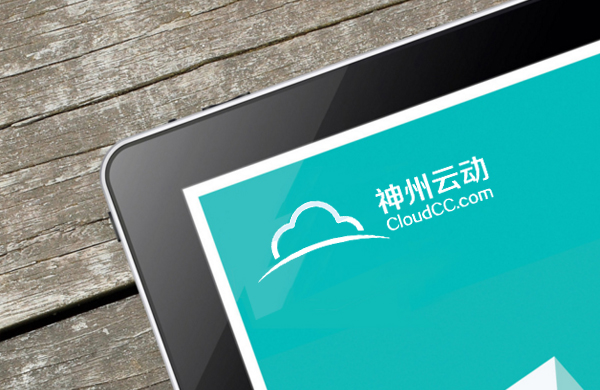
CloudCC CRM觀點:清晰的CRM數據來自良好的移動體驗
毫無疑問Salesforce是目前應用最廣泛的客戶關系管理(CRM)系統之一。然而,BYOD(bring your own device)的轉換將改變銷售和營銷的游戲規則,所以我們需要直接在CRM當中融合技術。
數據科學當然是其中的關鍵一環。從Salesforce日前對RelateIQ的收購可以明顯看出,這個行業正在轉向數據科學,希望通過數據科學實現一種分析和利用數據的先進方式。不過即使數據科學對CRM和銷售生產力未來的成功起到了舉足輕重的作用,但是CRM的革命沒有那么容易實現。銷售人員的分析水平取決于他們系統獲取的數據,為了確保銷售人員可以獲取高質量的數據,他們的平臺需要同時擁有強大的后端和良好的用戶體驗。
銷售管理人員清楚知道,將移動平臺的便捷和效率帶到CRM和Salesforce是銷售生產力的新前沿。《經濟學人》在2013年的一次調查發現全球有33%的企業高管打算在未來三年大力投資企業內部移動應用。然而我們要走的路還有很長,因為到目前為止,在這些高管當中只有15%真正有做到大力投資移動應用。
在開拓移動應用方面,銷售人員比企業的其他員工都要走得更前。那為什么不是所有的銷售團隊都有利用移動工具來提升生產力和效率呢?很多其他行業都已經適應了移動平臺,在移動支付領域,復雜的付款信息輸入過程已經被取代,有些應用甚至可以實現一鍵支付。還有用戶只需通過一次點擊就可以使用Uber或Lyft打車。但是企業解決方案提供商在這方面一直進展緩慢,無法提供簡單而自然的用戶體驗,這是CRM的一大痛點。
CRM數據輸入的過程可能需要消耗大量的時間和人力。很多銷售人員每周都會花上一整天的時間來更新他們的CRM數據。他們非常渴望數據輸入的移動解決方案,最好還能幫助他們完成交易和提升利潤。雖然現在市場上已經有一些可用的選擇,但是大部分的企業應用的用戶友好度都遠遠不如消費者應用,這樣不僅會影響這些應用的普及,而且一直都無法解決數據輸入滯后和不一致問題。
此外,企業正在迅速普及云端CRM和商業智能技術,希望這些技術可以幫助企業進行決策,但是這些決策的水平取決于它們的基礎數據。因此,改善數據輸入的流程將會是一個很好的開始。
但是利用移動工具來修復數據輸入問題只是成功的第一步。可執行的銷售數據被儲存在多個數據庫當中:CRM、日歷和電子郵件只是入門。成功的銷售代表會利用LinkedIn來尋找決策人員;利用Evernote這樣的工具進行記錄;利用Box、Dropbox、Sharepoint等工具來儲存參考材料,他們還會使用很多其他的工具。普通的銷售代表會使用大量的應用來管理他們的工作流程。這些工具可以提升他們的生產力,但是他們也知道如果這些工具之間缺乏整合的話,他們就需要在每個應用上花費大量的時間。
這些數據庫包含了相互聯系的信息,但是只有將它們作為一個整體來分析才能最大限度地發揮它們的價值——打開數據科學創新的大門,幫助銷售人員和銷售經理專注于最有價值的交易。一個高效的銷售生產力平臺需要將不同的數據庫聯系在一起,整理好交易和客戶關系的相關內容,幫助銷售人員和銷售經理認識到未來的機遇。
CRM系統不會消失,它們提供了銷售人員所需的數據基礎和工具,幫助他們進行報告和預測工作。但是他們還是需要完成一些工作才能從這些投入當中獲取價值。數據科學當然是成功的一個要素,但如果沒有移動優先的方法和對生產力的追求,這個“科學”也不能為你帶來什么。

原文:
Editor’s note: Andy Byrne is founder and CEO of Clari, a mobile-first sales productivity platform. Prior to Clari, Andy was part of the founding teams at Clearwell Systems and Timestock, Inc.
There is no doubt that Salesforce is one of the most widely used customer relationship management systems. However, the shift to BYOD is changing the game for sales and marketing, and we need an immediate infusion of technology in CRM.
Data science is certainly a key piece of the puzzle. With Salesforce’s recent acquisition of RelateIQ, it is evident that the industry is looking to data science to fuel a new and improved way of analyzing information and making it useful. But while data science is vital to the future success of CRM and sales productivity, a CRM revolution will take more than that. Your analysis is only as good as the data that goes into your system. And to ensure that sales reps input quality data, they need a platform that marries a powerful back end with an experience they love.
Executives know that bringing the convenience and productivity of mobile to CRM and Salesforce is the next frontier for sales productivity. A 2013 survey by The Economist found that 33 percent of global executives plan to invest heavily in internal mobile apps over the next three years. Yet we have a long way to go. Only 15 percent of these executives have actually invested at this point.
More than any other enterprise worker, sales professionals are blazing the mobile trail. So why doesn’t every sales team look to mobile to deliver breakthrough productivity and effectiveness? Many other industries have adapted; in the world of mobile payments, the painstaking process of entering billing information has been replaced, in some cases, with a single touch. And those looking to catch a ride on Uber or Lyft need only one click. But enterprise solution providers have been slow to deliver such simple and natural user experiences. And this is a big pain point for CRM.
CRM data entry can be a time-consuming, laborious process. Most sales reps sacrifice a full day every week just updating their CRM. Reps are starved for a mobile solution that allows them to easily enter data on the go. And more so, one that actually helps close deals and make them money. While there are some options out there now, most enterprise apps are far less user-friendly than their consumer counterparts, preventing adoption and perpetuating the problem of lag-behind, inconsistent data entry.
On top of that, companies are rapidly adopting cloud-based CRM and business intelligence technologies to fuel selling decisions, but those decisions are only as good as the underlying data. Fixing the process of data entry is a good start.
But putting mobile to work to fix data entry is only the first step. Actionable sales data is located across many silos: CRM, calendars, and email are only the start. Successful reps use LinkedIn to identify decision-makers; tools like Evernote for notes; Box, Dropbox, Sharepoint and other online storage systems for reference material; and many others. A typical rep uses a dozen apps to manage the pipeline. They use these tools to be more productive, but they know the lack of integration means a time-consuming dance as they sort through each app individually.
These silos contain interrelated information most useful when analyzed as a whole — opening the door for innovative data science to help reps and managers focus on the most effective next steps for the most promising deals. An effective sales productivity platform needs to tie data silos together, reorganizing the content around deals and relationships to give sales reps and managers a complete picture of their opportunities.
CRM systems are not going away. They provide the data infrastructure and tools they need for reporting and forecasting. But work needs to be done to derive value from these investments. Data science is definitely part of the equation, but without a mobile-first approach and an eye toward productivity, the “science” isn’t going to do much for you.
相關新聞
- CloudCC CRM探討大數據價值從發現到創造的應用現狀 2016-04-06
- CloudCC CRM觀點數據挖掘是大數據的核心 2016-04-06
- CloudCC:CRM顛覆傳統助力企業銷售工作,拼的就是實力! 2016-04-05
- CloudCC CRM探討企業使用crm解決什么問題? 2016-04-05
- CloudCC CRM解答CRM設計復雜是否降低了效率 2016-04-01
- CloudCC:CRM既要“追趕時尚”,更要“不忘初心” 2016-04-01
- CloudCC CRM探討企業為什么需要CRM? 2016-04-01
- CloudCC CRM探討CRM在企業管理中的三大作用 2016-03-31